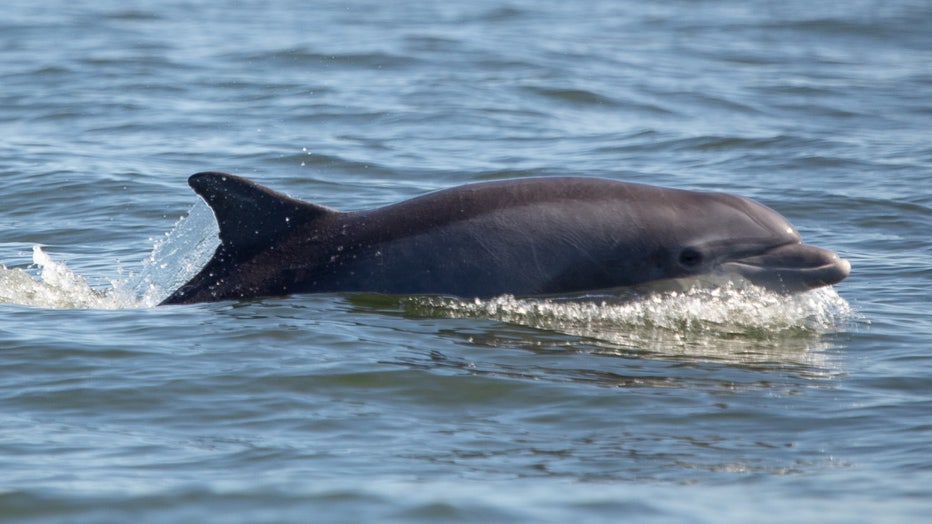Dolphin in Florida found with deadly bird flu, researchers say

Orlando investigating Lake Eola swan deaths
At least four swans at Lake Eola Park in downtown Orlando have been found dead ? leading the City of Orlando to open an investigation, a city spokesperson confirmed to FOX 35.
DIXIE COUNTY, Fla. - A dolphin that died after it was found in distress and stranded in Florida's Big Bend region was infected with highly pathogenic bird flu, according to a recently published report from researchers with the University of Florida Marine Animal Rescue Program. This discovery marks the first known detection of the Influenza A virus, a pathogen that causes bird flu, in a common bottlenose dolphin.
The dolphin was first put on researchers' radar on March 29, 2022. The Florida Fish and Wildlife Conservation Commission alerted the University of Florida Marine Animal Rescue Program about a dolphin that was "in distress" in a canal in Dixie County, according to the study. The dolphin was alive at the time, and was in between a seawall and dock piling that was nearly 8 inches wide. The people whose home was near the canal tried to free the dolphin, but it passed away shortly after, and before researchers arrived.
It was packed in ice and transported to the University of Florida College of Veterinary Medicine to be stored for a necropsy that was scheduled the next day.
Lake Eola swans in the clear after bird flu deaths, City of Orlando says
The dolphin had numerous health issues, but the "most prominent finding" was brain inflammation and leptomeninges, researchers said. The bird flu, at first, was not considered to be a cause of death for the dolphin, but the discovery of meningoencephalitis led researchers to consider "neuroinvasive etiologies previously diagnosed in other Florida wildlife," the study said.
Highly pathogenic avian influenza (HPAI) was considered an option due to the numerous reports of wild birds dying because of this type of virus.

REEDVILLE, VA - SEPTEMBER 25: A common bottlenose dolphin surfaces in the Potomac River near Reedville, Va., September 25, 2019. (Parker Michels-Boyce for The Washington Post via Getty Images)
"This raised the possibility there could have been spillover into another marine species (common bottlenose dolphin) with neurological involvement," the study said.
Dolphin found shot to death as NOAA offers $20K reward for info
As far as how the dolphin contracted the virus, researchers introduced several different possibilities:
- At least 10 seabird deaths related to the highly pathogenic avian influenza were confirmed in the area where the dolphin was found.
- Although birds are not a typical source of food for dolphins, there have been instances of dolphins killing birds. This would increase their exposure to potentially infected birds.
- Some dolphins may strand feed, which means they push fish onto muddy banks where they can be eaten. Birds are typically nearby during this process, which increases the exposure of fecal matter and urine. Researchers, however, said strand feeding is not a known feeding method in the area where the dolphin was found due to the presence of oyster bars.
- It is possible the dolphin may have come into contact accidentally with an infected bird while feeding on jumping fish or feeding on fish near the surface of the water.
Florida iguana lays 30 eggs inside resort swimming pool after getting stuck
One goal of this research study was to make the public aware of the importance of continued disease surveillance and biosecurity protocols. The consequences of viruses adapting and transmitting between different species "could be catastrophic" for these dolphin populations, researchers said.
"With no end in sight for the current (highly pathogenic avian influenza) outbreak, testing for avian influenza viruses should be a part of future routine health monitoring in marine mammal stranding investigations, especially if the animal displays any neurological signs," the study said.
Click here to read the full publication.

